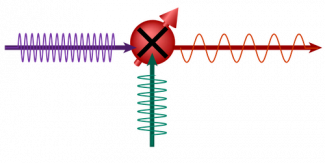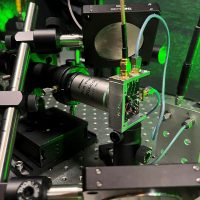News
Quantum sensor can detect arbitrary frequency electromagnetic signals
Quantum sensing is essential in tasks ranging from characterization of quantum devices, to exploration of magnetism in condensed matter, to imaging of microwave structures. Current quantum sensors have achieved excellent performance combining high sensitivity with spatial resolution. However, the frequency range of the signal fields that can be measured is still limited to either a small window around the sensors’ resonance frequency, or low frequency up to experimentally achievable control field amplitudes. This limit remains an obstacle to extending the benefits of quantum sensing to a variety of sensing applications, especially in the high-frequency range.
Recently, researchers at MIT Quantum Engineering Group, affiliated with MIT-Harvard Center for Ultracold Atoms, and Research Laboratory of Electronics, collaborating with MIT Lincoln Laboratory, overcome this limit and develop a technique to sense arbitrary frequency signal fields. The system the team devised, which they call a quantum mixer, injects a second frequency into the sensor to convert the frequency of the target field to a different frequency – the difference between the original frequency and that of the added signal – which is tuned to the specific frequency that the sensor is most sensitive to. Moreover, this technique can also distinguish vectorial components of the signal field and achieve the spatial resolution at nanoscale. They use nitrogen-vacancy centers in diamond, a broadly used quantum sensor, to demonstrate experimentally the quantum mixer concept by sensing a 150MHz vector magnetic field.
This work features the first integrated quantum sensor and frequency mixer that is compatible with all well-developed sensing protocols, with their demonstrated ability to achieve atomic scale resolution, high sensitivity, arbitrary frequency resolution, k-space resolution, etc. Besides, the theory of quantum frequency mixing, which they developed for the quantum mixer, is generally applicable to any periodically driven quantum systems, potentially leading to promising applications beyond quantum sensing: In quantum simulation and quantum computation, multi-frequency driving can be used to study topological phases and design noise-resilient gates. In communications, quantum frequency mixing provides an alternative way to perform frequency modulation and conversion while integrating with other operations.

Figure: Quantum frequency mixer is developed to sense arbitrary frequency magnetic field.
